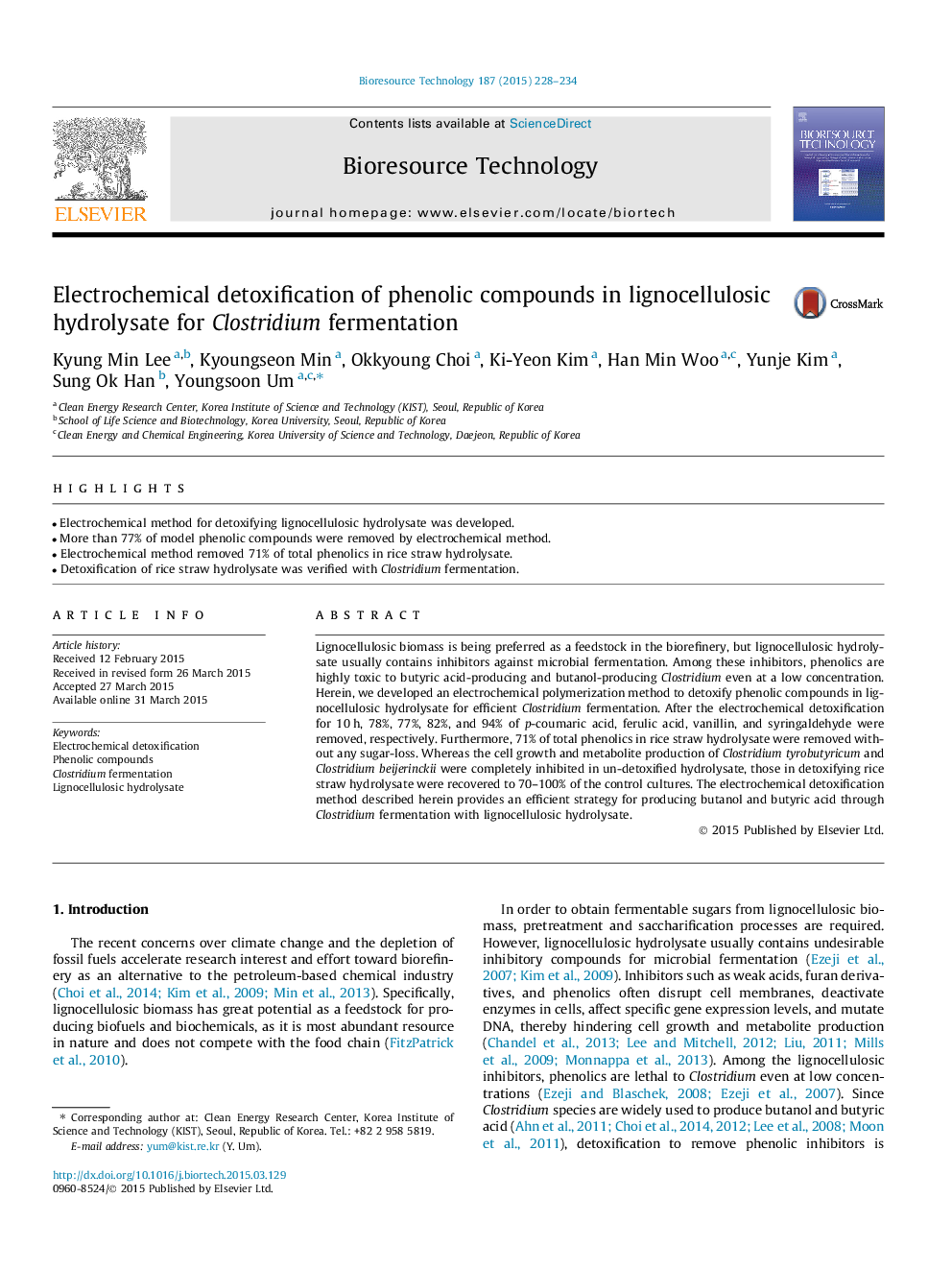| Article ID | Journal | Published Year | Pages | File Type |
|---|---|---|---|---|
| 7075146 | Bioresource Technology | 2015 | 7 Pages |
Abstract
Lignocellulosic biomass is being preferred as a feedstock in the biorefinery, but lignocellulosic hydrolysate usually contains inhibitors against microbial fermentation. Among these inhibitors, phenolics are highly toxic to butyric acid-producing and butanol-producing Clostridium even at a low concentration. Herein, we developed an electrochemical polymerization method to detoxify phenolic compounds in lignocellulosic hydrolysate for efficient Clostridium fermentation. After the electrochemical detoxification for 10Â h, 78%, 77%, 82%, and 94% of p-coumaric acid, ferulic acid, vanillin, and syringaldehyde were removed, respectively. Furthermore, 71% of total phenolics in rice straw hydrolysate were removed without any sugar-loss. Whereas the cell growth and metabolite production of Clostridium tyrobutyricum and Clostridium beijerinckii were completely inhibited in un-detoxified hydrolysate, those in detoxifying rice straw hydrolysate were recovered to 70-100% of the control cultures. The electrochemical detoxification method described herein provides an efficient strategy for producing butanol and butyric acid through Clostridium fermentation with lignocellulosic hydrolysate.
Related Topics
Physical Sciences and Engineering
Chemical Engineering
Process Chemistry and Technology
Authors
Kyung Min Lee, Kyoungseon Min, Okkyoung Choi, Ki-Yeon Kim, Han Min Woo, Yunje Kim, Sung Ok Han, Youngsoon Um,
